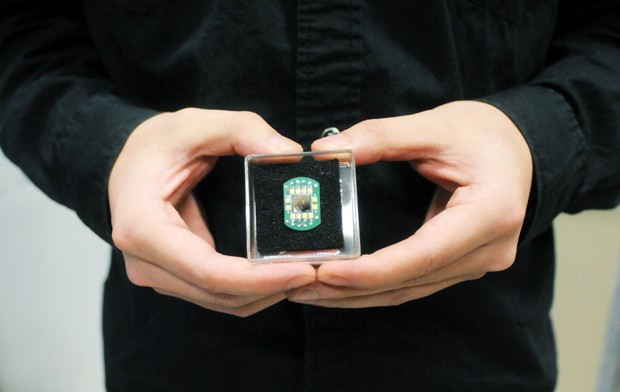Iron cobalt is known as the most magnetic material on Earth today, but a professor at the University of Minnesota was able to show that this may no longer be true. Dr. Jianping Wang, a graduate faculty member in the department of physics, said he was able to show an iron and nitrogen compound is 18 percent more magnetic than iron cobalt. The claim may disprove the accepted physics limits set for magnetization in a substance. âÄúWe found there is a new physics behind the materials we study right now,âÄù Wang said. In his iron and nitrogen compound material, Wang said he found electrons in a form that have never been addressed in traditional theories behind magnetization âÄî localized electrons, which differ from the free-flowing electrons that are typically seen in magnetic moments. âÄúWith the presence of localized electrons, you have to throw out all traditional understanding [of magnetism],âÄù Wang said. It is these localized electrons that lead to the high magnetization, according to Wang. Wang said his study goes against traditional theories found in textbooks that set limits on how magnetic a substance can be. This limitation is described as saturation magnetization value, which is a value of significance in looking at the limits of magnetism in a substance. âÄúThere are some materials where this value is beyond expectation or theory,âÄù Wang said. Wang said he used a technique called X-ray magnetic circular dichroism that allowed him to look at the compound in a truly specific way. Cecilia Sanchez-Hanke, group leader of the novel technique at the Brookhaven National Laboratory, said the method gives the ability to look at a sampleâÄôs specific parts individually. âÄúWhat it allows you to do is look at the magnetic contribution from each of the elements in the sample,âÄù Sanchez-Hanke said. âÄúWe have what is called element specificity.âÄù The specificity is important because it can tell each elementâÄôs contribution to the total magnetic moment, according to Sanchez-Hanke. Before this sample could be tested, Wang said his team had to create a method that made the iron and nitrogen compound in a very specific and reliable way. The method used is repeatable, which differs from attempts in the past, according to Wang. In 1996, researchers from the Central Research Laboratory of Hitachi in Japan made the same iron and nitrogen compound. Their research also showed that the material exceeded limitations set by traditional theories. However, scientists were unable to duplicate their experiments. Wang said the inability to duplicate prevented the Japanese groupâÄôs research from being investigated further by other institutions. This is something Wang made sure would not happen with his own research. âÄúPeople hesitated to follow their work because there is no physics,âÄù Wang said. âÄúNow we provide the physics. You can follow the recipe.âÄù It is this recipe that is mandatory for the research to be accepted in the physics community, according to Dr. Eric Fullerton, professor in electrical and computer engineering at University of California, San Diego. âÄúThe thing that always makes things go in science is when somebody else can reproduce it,âÄù Fullerton said. Dr. Yves Idzerda, professor in physics at Montana State University, said that since WangâÄôs research challenges longstanding laws of physics, replication from unrelated institutions is crucial. âÄúA strong claim really needs strong proof,âÄù Idzerda said. Also, due to failed attempts from others in the past, Fullerton said proving WangâÄôs claim in magnetization requires a higher level of work than other research. âÄúWhen you are claiming something others have been working so hard for, it comes with a higher expectation.âÄù If WangâÄôs findings turn out to be correct, Idzerda said the commercial applications could be huge. One possible use of the compound is contributing to solving energy problems currently being faced in the United States, according to Izderda. Izderda said the magnetic material could improve transformers and other technology used in transferring energy from the power source to homes. âÄúThese materials would allow us to be much more efficient in power generation, transmission and use,âÄù Izderda said.

















